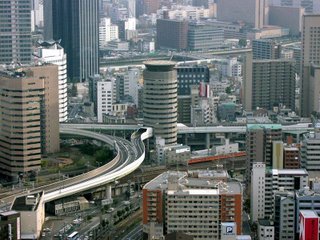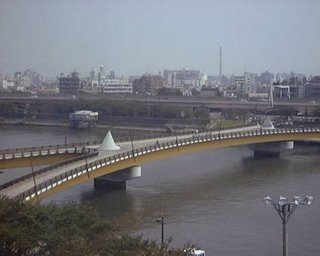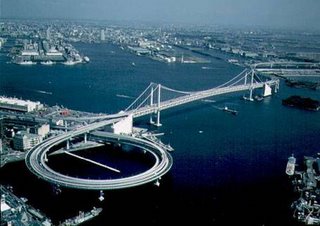The failure of agriculture production is not only due to climate factor. According to president Nyerere it is principally a problem of implementation. However, critics argue that in fact, just like any other Tanzanian economic sectors, the deterioration is caused by government’s basic economic strategy. Early in 1975, Tanzanian started to reform its economic policy gradually, which is known as the Dar es Salaam Spring.
In my view, the misfortune that Tanzanian had to experience was another historical experimentation for a non democratic socialism. The goal for Nyerere was to make a poor nation economically independent with an equalitarian society, unfortunately, just like any other social experiments, it became another big failure. In this essay, I am going to briefly analyze the issues that in my view could be considered as the major causes, and then I will examine the economic policy and practice of Tanzania with three different economic theories.
Historical Cause
Tanzania was once a colony to Germany; at that period, German intensified the Sisal corps production which is only good for industrial use as raw material. After the W.W.I, Tanzania became a British mandate, technically it means that Tanzanian could become an independent sovereignty at any time. Unlike Kenya, British did not invest on the infrastructure which is the basic economic foundation of the country. The simple fact is that roads connect people is obvious. Without it, people of rural world could not do commerce between them and could hardly get to go to Dar-es-Salaam, mwanza, Arusha and so forth. From a political perspective, this factor undermined the Tanzanian farmers to become unified as a single political unity or interest group. Later this factor became the key cause for the failure of Tanzanian economy, not because the road scarcity but because of its consequences.
Well, some have argued that Tanzanian government implemented consciously harmful policy toward agrarian world because the decision making in the government is uniquely composed by urban elite who favored industrial development which takes place in the urban area, because that is where they live. I personally disagree with these critics on this matter. President Nyerere's socialistic ideology was thought to be the right way to improve agriculture in Tanzania. The country had just became independent and her economy was at its infant stage. Socialism (Ujamaa) helped bring Tanzanians together but slowed down agricultural developement and the economy as a whole. Moreover, Ujamaa embraced subsistence farming which was poorly funded, uorganized farmers and depended on raifalls. No raifall no farming and famine comes.
As farmers are unorganized; therefore, they are not recognized by the urban elite. The fact is Tanzanian elite unlike in the case of Kenya, they do not have personal economic interest in agriculture activities; consequently they become insensitive to rural problems. As the result, because the poor profit and discriminatory policy, farmers lost the interest on large production, and engenders a situation of “Administratively Generated Rent” as the result. It means due to government policy, foodstuff becomes a scarcity, a large gap exists between official price and black market price, and urban people have to buy the food on the black market pay the higher price because the government’s food could not suffice .
Unlike in Kenya who has the system of Mixed Farm, farming industry in Tanzania at the time of independence was poorly developed. De facto Tanzanian farms were small of size, production was not so intensified, badly concentrated between them and cities. Nevertheless, Tanzania is a large African nation, at the period it had a relatively small population, hence rural people had no problem with scarcity of land or job, and agriculture provides 80% of employment (same as for today). In sum, Tanzanian agriculture sector at the time of independence was the core of nation’s economy, although it was not as advanced as the Kenyan one, but it was increasing, healthy and earning foreign currency.
Government PolicyThe malaise in Tanzania has evoked a voluminous academic commentary. Most of Africanist argue that the causes of its failure are both internal and external; it is a response that; however, in my view lacks academic credibility for the reason that such answer could be used at any circumstance and apply to any issue. I am very interested with the explanation of Uma Lele (1984: 160) who suggests that external influence such as the drought of 1973-74, the break up of East African Community in 1977, the war with neighboring Uganda in 1979, two oil crisis of 1973 and 1979 had indeed contribute to the failure of Tanzanian economy. But, she argues, it is also necessary to “blame on failure of the government’s own economic policy”, because Tanzania is one of the largest African recipients of foreign aid, it received $2.7 billion from 1971-81. Therefore it exceeds the external factor cost. Lofchie (1988: 148) exemplifies that the nature of failure is a result of long series of harmful policy, a social political dilemma between concentration of capital and redistribution of wealth. As a matter of fact, external factor must to be considered with attention, but I believe internal cause should be studied with even closer consideration. The fact is the socialist Tanzanian government opposed to any substantial admixture of capitalist practices in the Tanzanian economic development, it was against the use of market incentive system as means to excite agriculture production or any other mercantile sectors, such policy also discouraged foreign investments. Overall, it eliminated the possibility of to use market competition as stimulus of economic growth.
Observers who are sympathetic to Tanzanian socialism generally seek to blame on the external economic effect in order to exonerate Nyerere’s socialist policies, which are in my own perception the ultra cause of economic failure. Other academics argue that if the export volume of agriculture corps remains the same during the 70’s, Tanzania would not have to face to such economic catastrophe. As a developing country, Tanzania needs foreign currency badly, but if the export volume of crops fall, and at the same time major import goods price such as for oil, and expenditure increases, it is normal that the government went bankrupt financially an faced balance of payments crisis during the early 1980’s.
Ujamaa VillagesTanzanian government attempted to implement a nationwide system of collectivized agriculture. Due to geographical problem, Nyerere thought by putting peasants to live together they would benefice fully the social infrastructure such as school or clinic, another goal for the latter was to see the agriculture production increases subsequently. Ujamaa is the word in Swahili to describe such village. The technique of Ujamaa is to replace individual farms with a network of village communities in which land should be collectively held and production collectively organized. In the analysis of Arkadie ( 6), the project of Ujamaa was:
To transform the pattern of rural settlement by congregating the rural population with previously had been resident predominantly on dispersed family smallholding – in nucleated villages of sufficient size to be efficient units for the delivery of services.
Of cause, no one, especially for the peasantry would like to give up their traditional habitat, the resistance of villagers was common, both in terms of to give up the farms and to move. The villagization became even more intense after 1969 (during the period of second Five Year Plan). In two occasions, because the policy was so unpopular that Tanzanian government had to use military force, it happened in the region of Dodoma and Kokuma. According to Lofchie (1988: 153) before the collectivization, merely 5% of rural population lived in villages, but by the end of 1975 Ujamaa policy had forced more than 60% of rural population to live in settled villages.
After different academic researches, the collectivization policy contributed directly to Tanzanian agriculture crisis of 1974-75. For instance, the marked agriculture production in the 1970’s differs extraordinarily with the previous decades, thought, the population growth was about 2.5%, but the 6% growth realized in agriculture sector from 1950’s and 60’s indicates without doubt that it was increasing. But in contrast, during the 70’s different export corps are either decreased or stagnated. Worth, according to Lele (1984:166) during the 1980’s export volumes were less than half those of 1970. She argues that if the export volumes had been maintained as the 1970’s, the balance of payments crisis clearly would not as this bad.
On the other hand, in my view, if the industrial sectors had performed as great as Julius Nyerere had expected, although the food production decreased, the financial crisis could not happen either. Therefore, the poor economic performance including agriculture and industrial sector was the result of policy implemented by the socialist government.
Arusha Declaration: Between 1967 and 1975In February 1967, president Nyerere declared in Arusha that Tanzania is a socialist country, his policy will pursuit the realization of self-reliance and egalitarian society (Arkadie: 1995). From 1961 to 65, politically Tanzania enjoyed a period of Open Society, with a multiparty and free civil association system. People are free to elected local officials and join any political association they want. However, due to the economic policy of that time, which was the USSR style of Central Planning system and Import Substituting Industrialization, the political environment changed gradually.
Like any other Third World countries of that period, Tanzanian leaders are looking for an economic development model that promises to promote a fast industrialization, which believed wrongly as the key to economic success. After 40 years of socialism, Soviet launched Sputnik, it demonstrates the successfulness of Russian economic model. Hence, the socialite Central Economic Planning, which opposes to the free market system was the one preferred by most new leaders of Third World. However, the Central Planning System, regardless five years or seven years plan has an objective to achieve. In order to realize the objective, it can not allow any different voices to challenge the plan. Therefore, to ensure the process, it requires as in Russia an authoritarian government. Nyerere as the result declared in Arusha that for the well being of the people, Tanzania is a socialist country, and embrace one party state system.
Tanzanian version of socialism development was an unbridled program of state regulation and control (Lofchie: 1988). It was accompanied by implacable governmental opposition to any substantial admixture of capitalist practices in the nation’s development and; therefore, refused to use the Free Market Incentives as a means of improving agriculture and industrial growth. Capitalism was considered as imperialism and profit seeking was evil doing. The socialism of Julius Nyerere carries out three major policies that caused the economic failure. 1. overvaluation of currency, 2. suppression of agriculture price 3. the determination of to pursuit ISI.
Overvaluation of ShillingIn 1967, Tanzanian government creates Tanzanian shilling, it was an over valuated one. The purpose to over valuate the currency is to allow the government to import foreign good, such as technology, at a cheaper price. The state also control the banking system, so the government could decide to which economic sector the loan will be provide, and at what interest rate, such practices are known as mandatory interest rates and guaranteed Letters of Credit. The overvaluation of currency significantly reduced the real producer price received by Tanzanian farmers because they are paid with the local money. But the profit they received are calculated with the official exchange rate between the U.S dollar and shilling; therefore, they received fewer shilling as by comparing with the shilling of real free market exchange rate. At the same time it also means that the food produced in Tanzania is much more expensive than the free market price, consequently it is more interesting to buy the food from international market, and the Tanzanian government encouraged such practice because it believes that by allowing food to be imported, it reduces the internal food price (World Bank: 1981), and provides cheaper and more food for urban population.
Suppression of Agriculture PriceThe state establishes Marketing Board, which controls the buying and selling of all agriculture products. This system permits the government to setup a purchase price which does not reflect the real market price. Hence the government can offers to the urban people low cost food and at the meantime makes further profit on the export oriented corps such as coffee. The profit made with the Marketing Board in theory will go to finance the growing urban industries and other social expenditure such as school and clinics. The idea sounds excellent, but technically, the government made a mistake. The members of the Marketing Board were chosen by the government, not by the farmers like in Kenya, those officials represent; therefore, the interest of government not farmers. In addition because members are not elected by the farmers, they are insensitive to their issues. In contrast, in the neighboring Kenya, the members of Marketing Board are farmer elite elected by farmers, they are responsible to their constituency, and therefore farmers’ economist interest is protected.
In Tanzania, government legally controls prices for basic foodstuffs; Nyerere argues that by doing so, people’s interest is been protected. For the farmers, regardless the price of international market they will always receive the same tariff for their products, and for urban population, food will always be cheap. Hence, the government monopolized the buying of crops nationwide, the prices are fixed at below real market price, and agriculture producers could not negotiate the price with the government officials. When the cost of local food becomes too high, subsidies are provided to the urban people by selling the import food at below landed coast. Yet, the fact is in addition of import food and international aide, urban people still do not have enough food!
The socialist government’s strategy was a to be self sufficient; however, ironically it could not even maintain a normal ability of food production. The collectivization policy in the agrarian world was to promote a social equality among farmers; hence, larger farmers were called as “Kulaks” or exploiters, and had land confiscated. If to produce more food is; therefore, an act of capitalism and subject to punition, no farmer is willing to produce any extra food. This is the reason of way Tanzania experienced food crisis and had to import food from international market, which exhausts its currency reserve.
I am still working on this section, PLEASE STAY TUNED





 main stock index has doubled in value in the past year making China one of the major players in the world stock markets and the world economy as a whole. Chinese recent economic slump has worried the entire globe and has triggered stock prices to fall
main stock index has doubled in value in the past year making China one of the major players in the world stock markets and the world economy as a whole. Chinese recent economic slump has worried the entire globe and has triggered stock prices to fall 







